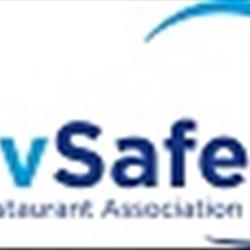Quick Tips for Effectively Finishing Your ServSafe Food Handler Training Course Online
Quick Tips for Effectively Finishing Your ServSafe Food Handler Training Course Online
Blog Article
Comprehensive Food Handlers Educating for Hygiene and Security
In today's rapidly progressing food service landscape, thorough food handlers training has actually become a critical element for making certain health and security. By instilling important methods related to hand health, food storage space, and sanitation, this training not only mitigates the danger of foodborne ailments yet also reinforces compliance with regulative criteria. The effects of such training expand past plain conformity; they discuss public wellness and customer trust. The efficiency of these training programs can vary significantly. What elements really determine their success in promoting a society of safety?
Value of Food Safety Training

In addition, food safety and security training helps to guarantee that workers understand present regulations and guidelines, which are important for keeping operational licenses and preventing expensive penalties. Regular training sessions also act as a system for enhancing ideal techniques, thus minimizing the likelihood of human error, which frequently functions as a leading root cause of food contamination.
Moreover, buying food security training can improve a facility's credibility, as consumers significantly focus on eating experiences that mirror high safety and security requirements. Such positive steps not only secure customers however also add to the long-lasting success of food companies. In summary, thorough food safety and security training is a crucial aspect of food service procedures, directly influencing both public health and wellness and company sustainability.
Key Principles of Hygiene
Keeping high requirements of health is crucial in any type of food taking care of environment to stop contamination and guarantee the safety of consumers. The vital principles of hygiene incorporate a number of critical practices that food handlers should constantly apply.
First, hand hygiene is extremely important; food trainers should wash their hands completely with soap and water before and after handling food, along with after utilizing the bathroom or touching any potentially polluted surface areas. Second of all, devices and surfaces should be frequently cleansed and disinfected to remove virus. This includes utensils, cutting boards, and countertops, which need to be preserved in a tidy problem.


Proper food storage is additionally crucial; raw foods need to be kept separately from prepared or ready-to-eat things to avoid cross-contamination. servsafe. Furthermore, keeping proper temperature controls is vital; perishable things need to be kept at safe temperatures to inhibit microbial growth
Lastly, personal health can not be overlooked. Food trainers ought to wear tidy apparel, use hair restraints, and prevent functioning when ill. By sticking to these vital principles of hygiene, food trainers can dramatically lower the risk of foodborne ailments and promote a much safer eating experience for all customers.
Common Foodborne Diseases
Although many foodborne health problems can be protected against via correct health and safe food dealing with techniques, they stay a considerable public wellness problem. Foodborne microorganisms can bring about a variety of illnesses, varying from mild intestinal distress to extreme complications and even death.
Typical foodborne diseases include salmonellosis, triggered by Salmonella germs, commonly connected to undercooked chicken and eggs. An additional widespread ailment is listeriosis, associated with raw dairy items and ready-to-eat meats, which can be specifically harmful for pregnant women and immunocompromised individuals. Norovirus, frequently contracted from infected food or surfaces, is known for its rapid spread and capacity to trigger break outs in common settings.
Escherichia coli (E. coli) infection, especially connected with undercooked ground beef and contaminated fruit and vegetables, can result in extreme stomach aches and kidney failure in many cases. In addition, Clostridium perfringens, often located in huge quantities of food that are improperly stored, can create gastrointestinal disorder with signs appearing quickly after usage.
Understanding these health problems is important for food handlers, as recognition can dramatically decrease the threat of contamination and safeguard public health. Correct education and training are vital parts in combating foodborne illness.
Finest Practices for Food Handling
Reliable food managing practices are crucial in preventing the spread of foodborne health problems. First of all, correct hand hygiene is essential; food handlers must wash their hands thoroughly with soap and water before and after managing food, especially raw meat or chicken - servsafe. This simple activity considerably lowers the danger of cross-contamination
Second of all, maintaining suitable food storage space temperature levels is critical. Disposable things should be kept at or below 40 ° F(4 ° C) to prevent microbial growth. Additionally, prepared foods need to be kept above 140 ° F(60 ° C) up until offered.
Thirdly, guaranteeing cleanliness of surfaces and devices is essential. Routinely sanitize countertops, cutting boards, and tools, especially after preparing raw foods. Use separate cutting boards for raw and ready-to-eat foods to better lessen contamination dangers.
In addition, when preparing food, it is essential to adhere to the principle of "first in, initially out" (FIFO) to handle supply properly and lower wasting. Constantly read and stick to food item labels for safe cooking temperatures and handling guidelines. By carrying out these ideal methods, food handlers can considerably improve food security and protect public health.
Implementing a Safety Society
Developing a security society within a food managing environment is vital for fostering a dedication to food security amongst all team see this page member. This culture stresses the value of food safety as a common responsibility, urging staff members to focus on hygiene techniques constantly.
To implement a safety society, companies need to begin by giving extensive training that addresses food handling protocols, prospective hazards, and the importance of personal health. Training sessions should be interactive and tailored to the details roles of team member, making certain significance and involvement.
In addition, leadership plays an essential role in establishing this society. Monitoring should model risk-free techniques and communicate the value of food safety and security routinely. Identifying and compensating employees who maintain safety and security criteria can further reinforce these habits.
Furthermore, open interaction networks have to be developed, enabling team to report safety issues without worry of consequence. Routine security audits and feedback sessions can help identify areas for improvement and strengthen responsibility.
Eventually, growing a security society not only improves conformity with food safety and security laws yet additionally shields public wellness, cultivates worker morale, and contributes to the overall success of the food taking care of facility.
Verdict
To conclude, thorough food trainers training plays a critical function in promoting health and safety and click here for more info security within food explanation solution establishments. By equipping employees with crucial expertise concerning food security principles, usual foodborne health problems, and finest methods for taking care of food, such training dramatically minimizes health threats. In addition, cultivating a society of safety improves the establishment's online reputation and lines up with customer expectations for high safety and security requirements, inevitably adding to public wellness defense and the total success of the food service sector.
In today's rapidly evolving food solution landscape, extensive food trainers training has arised as a critical part for guaranteeing health and safety.Food safety and security training is vital for maintaining high criteria in food handling and preparation, with research studies showing that proper training can minimize foodborne ailments by up to 30%. In summary, thorough food safety and security training is a vital component of food service procedures, straight influencing both public wellness and business sustainability.

Report this page